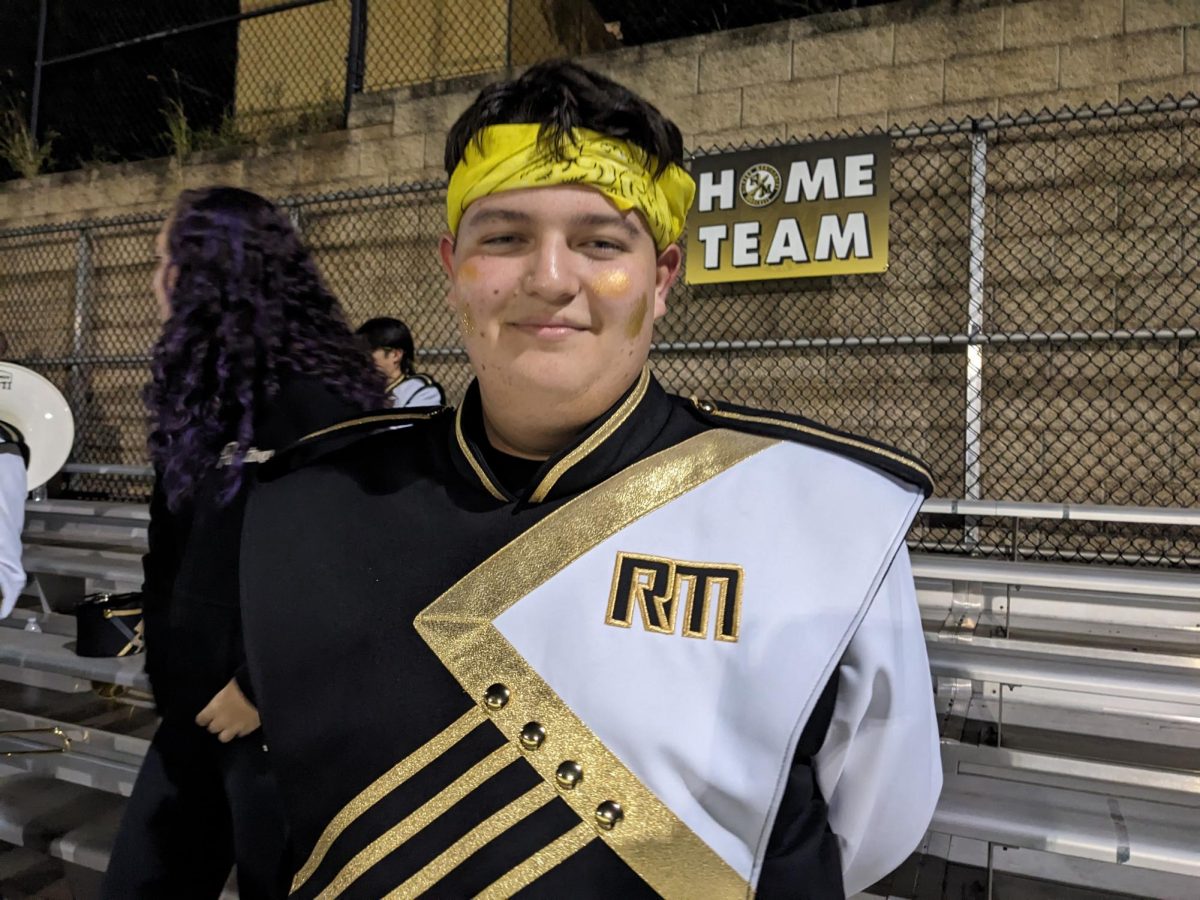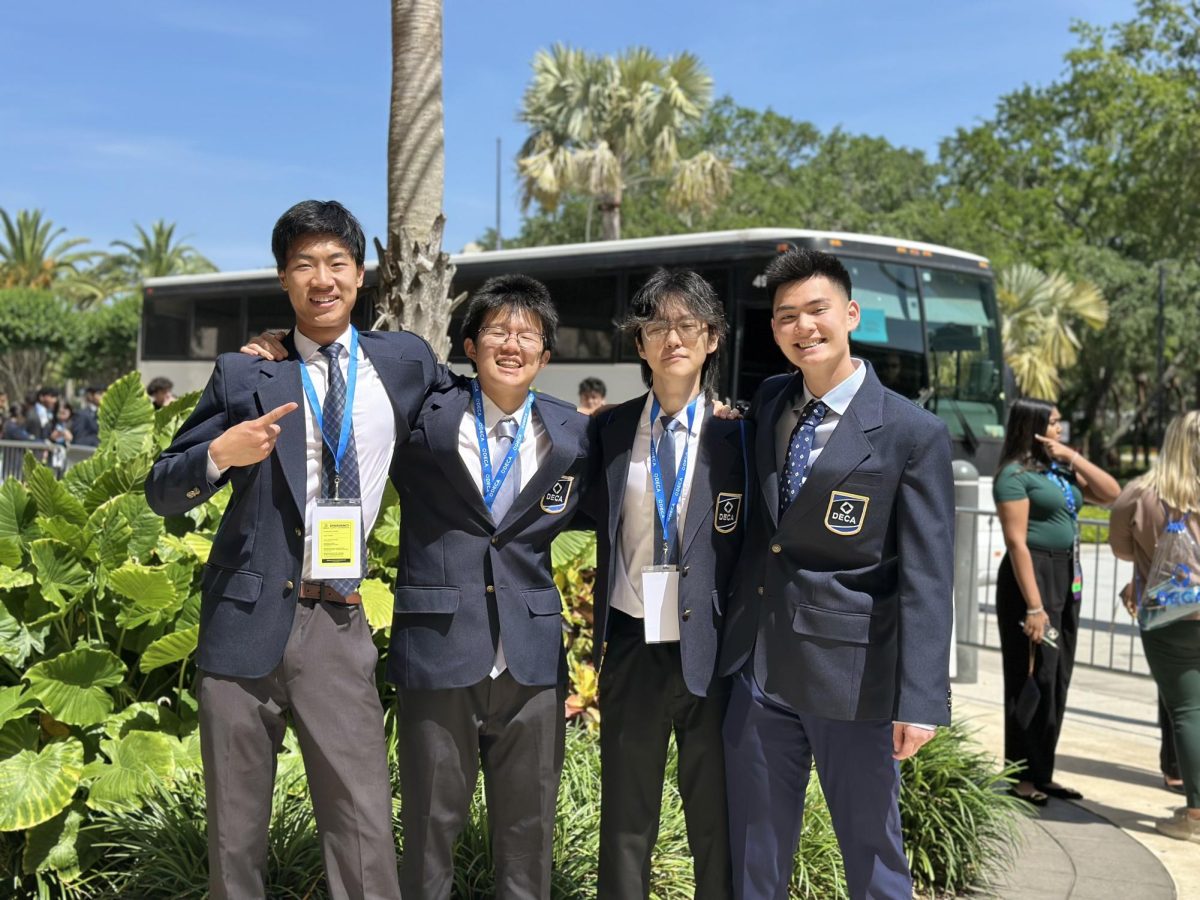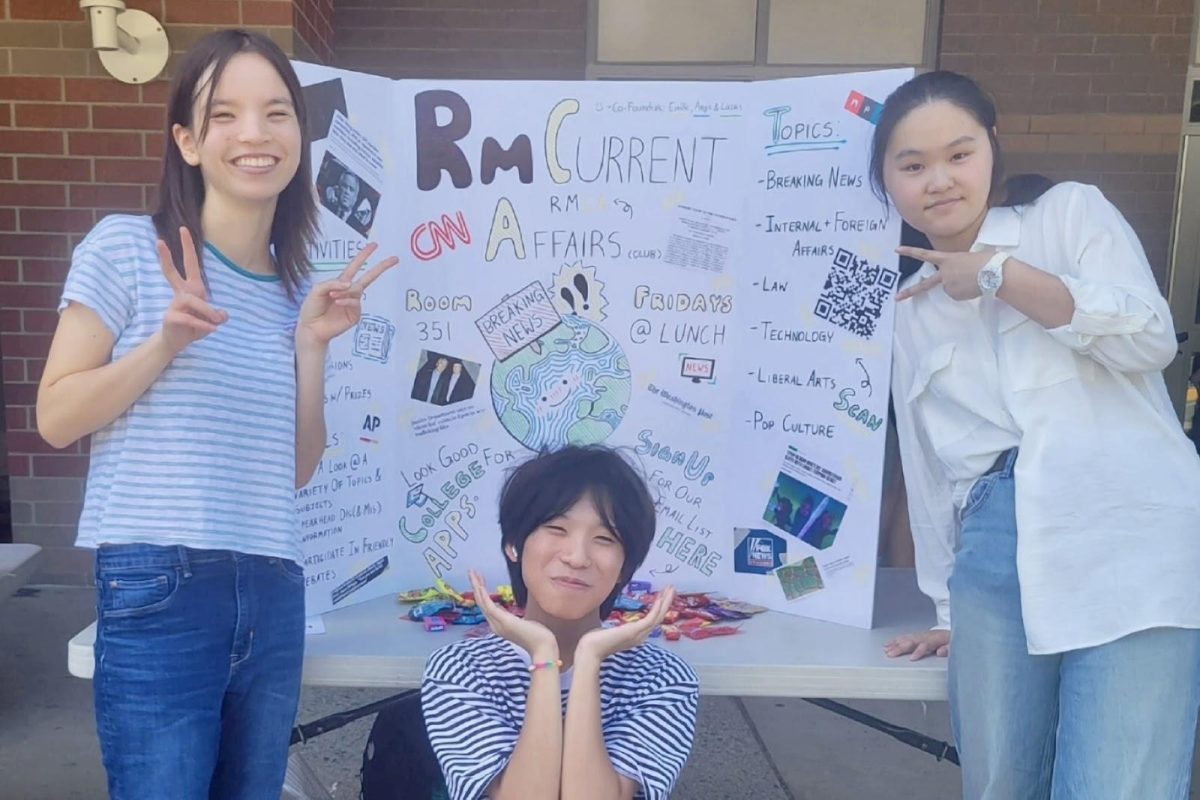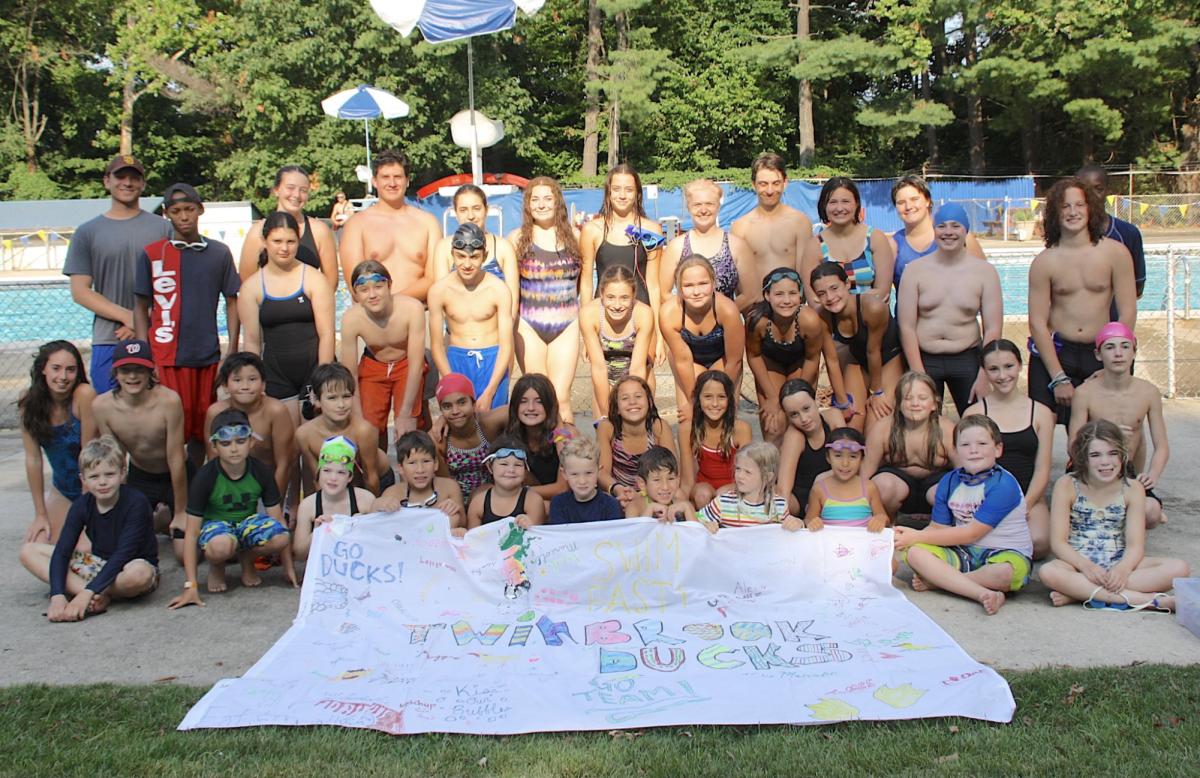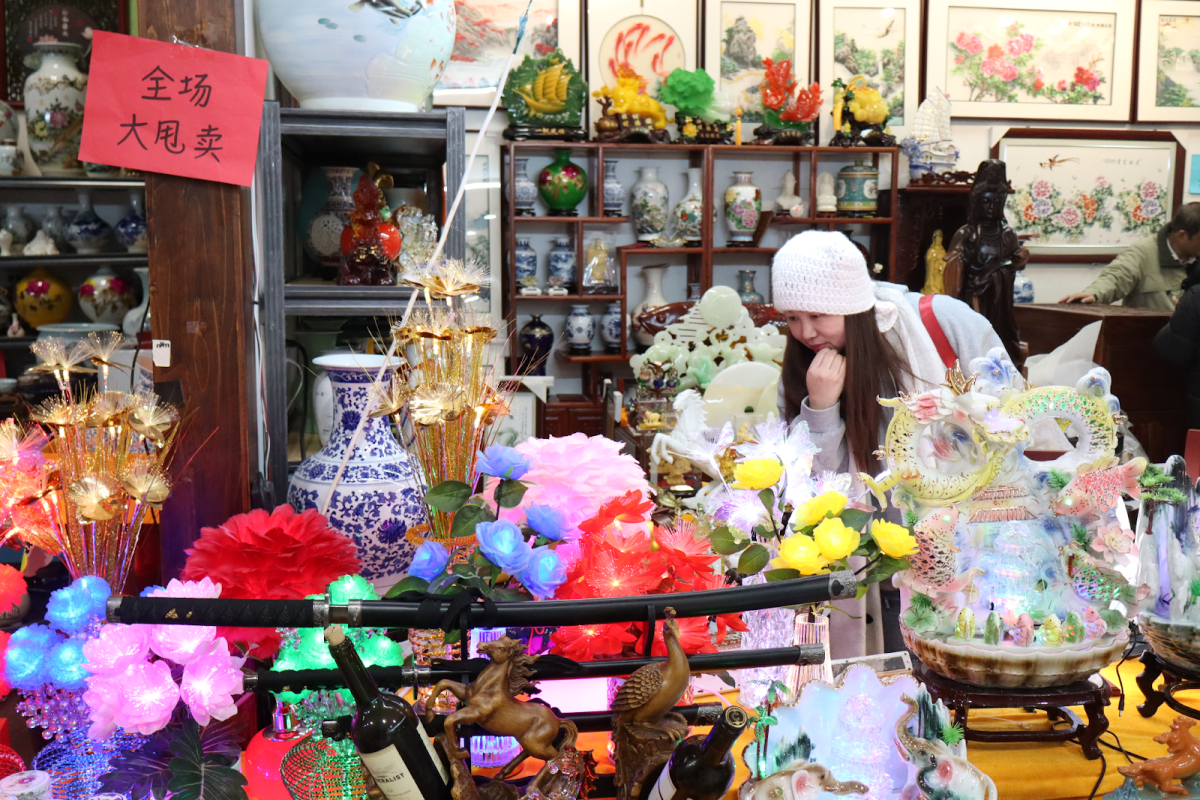“[Culture] is who you are.” English teacher Violeta Howard sat calmly at her desk, speaking with eloquence and enthusiasm about her Hispanic background and RM’s rich diversity. Now in her second year, Ms. Howard is already deeply involved in the school community. Howard co-sponsors Chicas Charlando, a student-led club that uplifts Spanish-speaking girls.“The Spanish speakers especially, but any girl, [can] come and have a special place where they can talk about anything,” Howard said. Most members in Chicas Charlandos are, in fact, immigrants. The club is just one of countless cultural and identity-based organizations listed on RM’s website.
During Hispanic Heritage Month, many RM students, staff and groups celebrate the heritage and achievements of the Hispanic and Latino community. The month spans Sept. 15 to Oct. 15, beginning with the independence day of five Latin American countries. RM’s Puerto Rican Principal, Alicia Deeny, is both the school’s first female principal and the first Latina high school principal in MCPS.
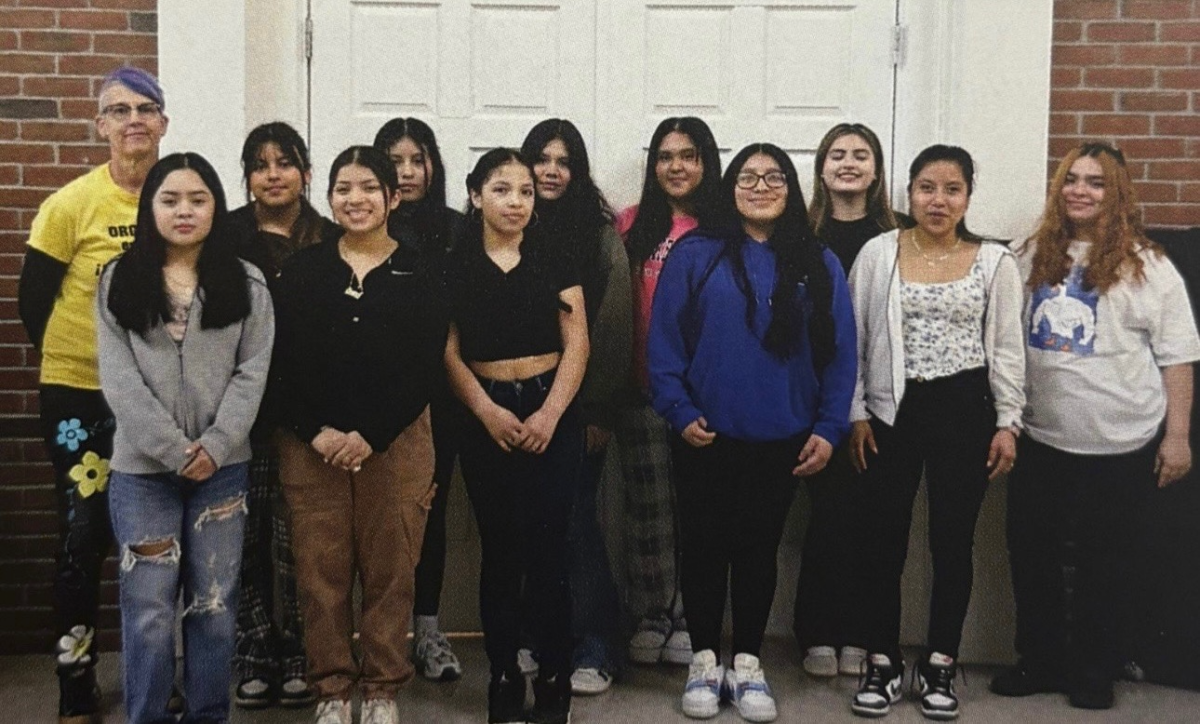
Founded just a few years ago, Chicas Charlando (which literally translates to “girls chatting”) consists of about 20 members and meets weekly. “Sometimes we just eat lunch together, and we talk about the things that we can do. They come with ideas on how they can serve the community,” Howard said. In the past, members have written letters to soldiers, painted rocks for mental health awareness and made cards for the elderly.
But most importantly, Chicas Charlando specifically allows new or underrepresented students struggling with language barriers to share experiences with each other. One of the club presidents is senior Lina Silgado, who immigrated from Guatemala two years ago. Her English still isn’t fluent, so our interview was conducted in Spanish. She says that the club is a safe space for her, especially as a woman. “Sometimes you don’t know the people you meet and sometimes they want to take advantage of you, more so when you are a woman,” Silgado said. “More women can practically also give a testimony about what their life was like when they came, or their life when they were there, or the culture,… and the truth is that group has been helping me a lot.”
The club is also a chance for members to sharpen their English and learn more about other cultures, as well as their own. “Not all of us know much about our country, so we also researched how many languages are spoken in each country, sometimes the crops that are grown in each country, all of that. The clothing too,” Silgado said.
For her, Chicas Charlando holds a special place in her heart as she navigates the recent death of her father. Silgado was an active member of the club, her passion earning her a leadership position. Yet, following this event, she has not rejoined this year and is focusing on herself and studies for the time being. She plans to return to Chicas Charlando soon. “I’m going to go back,” she said. “I want to continue there. At school, I want to try to do everything well, to be honest, because I know that all of that will make my dad proud.”
The Latino Student Union was started by two friend groups with a common mission of creating an inclusive community and providing a home for Latino students. “We’ll talk about World Cup qualifiers, we’ll talk about ICE raids going on, how to keep each other safe, and we also talk about scholarship opportunities and different opportunities for Latino students in academics,” junior Rafa Castro, LSU leadership member said.
The club is sponsored by history teachers Paula Cano Hernandez and Carlos Montalvan. “We meet about twice a month and we always have a snack. Usually kids will bring cultural food item, other times, it’s just brownies,” Cano Hernandez said. During meetings, common activities include cultural trivia, current events discussions and learning about important Latino figures. They also celebrate their background by playing Lotería, a Mexican game of chance similar to Bingo, creating papel picado, a traditional craft, and hanging posters around the school.

Another important goal of the club is to combat generalizations about the Hispanic and Latino experience. “A lot of times when people think of Latinos or Hispanics, they just centralize around one culture, and they really don’t realize how diverse being Hispanic or being Latino is,” junior Adriana Benavides, another member of LSU leadership said.
In the future, LSU hopes to collaborate with the other cultural clubs in the community. “We are really interested in reaching out to other clubs, like Chicas Charlando or National Spanish Honor Society, and maybe doing a joint meeting together. We think that would be really exciting,” Benavides said.
On a more academic level, the National Spanish Honor Society offers a prestigious way for students to immerse themselves in the Spanish language and culture. Junior and secretary Bennett Parisi says that while he isn’t Hispanic, he still believes in the importance of learning about other cultures. “Any [sophomore, junior or senior] who’s taking a Spanish class and has a 3.5 average over this semester is allowed to join… So it’s not specifically restricted to Spanish background,” Parisi said. “We really try to spread celebration while also maintaining… both good grades and good participation.”
Field trips are also a crucial part of all three clubs. Last year, Chicas Charlando members took one to a restaurant. “I think one of the projects that I really like was when they were visiting this place where they have Salvadorian food. So they went and they visited the place, and [the restaurant] showed the process of how to make pupusas, and then they ate the pupusas,” Ms. Howard said. “They were interviewing the cook… so that was really exciting.” Likewise, SNHS members took a field trip to the Spanish heritage exhibit in the National Museum of American History, and afterward ate pupusas in a DC market.

Beyond celebrating heritage, RM’s cultural clubs offer many immigrant students a safe space where they can express themselves freely in ways that are harder within a broader school environment. “I think it’s a challenge as an immigrant…It’s easier to express it in your own language than to come and try to express it in a different language. So they look for that place where they can share culture, food, ideas, ideals, and at the same time, it’s a safe place where they can just be who they are,” Ms. Howard said.
The school is widely praised for promoting inclusivity in one of America’s most diverse counties. “It seems normal to have a Latino student union, it seems normal to have a Black student union…building that as kids’ norms today is something that they’re gonna carry into the future,” Cano Hernandez said. Diversity lessons even appear in advisory slides. While no school is perfect, most students and staff agree that RM strives to represent everyone. “I think that we’re doing a pretty good job, especially compared to some other schools in our area.,” Parisi said. “We have a…. good amount of clubs that are trying to do their best to celebrate all the different people that we have.”




